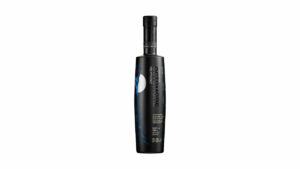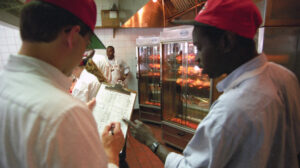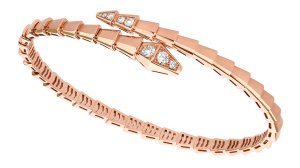There’s a lot of truisms around cooking that when poked and prodded by science aren’t actually that true. No, salt doesn’t help water boil faster, and, no, searing meat doesn’t seal in the juices. But some techniques that chefs swear by and home cooks have adopted may deserve some more scrutiny. And one of them is basting a in the pan—essentially splashing big spoonfuls of hot butter, usually flavored with herbs and garlic, over your beef at the end of cooking.
Basting a is supposed to make meat cook more evenly, cook faster, remain juicier, and impart more flavor. It’s a method chefs like Chris Young have employed for a long time. But Young is also a chef willing to see if accepted kitchen wisdom was all that wise in the first place. He used to be the head development chef Heston Blumenthal’s wildly inventive three-star Fat Duck in the U.K. before coauthoring one of the definitive tomes exploring the intersection of cooking and science, . On his current he’s still trying to sort fact from fiction when it comes to cooking, which led him to wonder if basting steak actually worked.
What makes Young’s approach to figure this out different than most chefs or home cooks is the scientific rigor with which this man—who studied biochemistry and mathematics—approaches the questions he’s trying to answer. So Young set up an experiment where he cut steaks from the same muscle to the same thickness; weighed them to assess pre-cooking and post-cooking moisture loss; and inserted wireless thermometers to measure the core and surface temperatures of the steaks as he pan roasted them.
You can watch the video below to see how he fully sets up and executes his experiment, but after cooking a control steak without basting and experimenting with basting steaks, his conclusions became clear. Ultimately, Young figured out that basting doesn’t speed up cooking, cook beef more evenly, or keep meat juicy. But surely all that flavored butter made it taste better, right? That’s what Young was thinking would be the case, however if you simply brush an unbasted with herbs dipped in butter, you couldn’t tell the difference in flavor from a basted steak.
So Young found, to his surprise, that when answering the core four questions about basting, the technique didn’t appreciably help improve the steak. Despite that, he does plan to continue basting because Young did find that the surface of the basted steak better retained its heat when he went to serve the beef, which is a positive when wanting to serve hot food to friends and family. But more importantly, Young still believes the process of basting is satisfying and fun to do. And that’s an major thing to remember when cooking at home: Sometimes it’s not all about efficiency and efficacy; it’s about having a good time making food.
Authors
-

Jeremy Repanich
Jeremy Repanich is Robb Report’s culinary editor. He joined the magazine after stints at Good, Playboy, and multiple publications at Time Inc. His writing has also appeared in Vice, Deadspin…
Credit: robbreport.com











